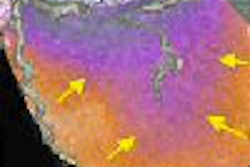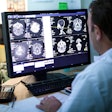Building or modifying a diagnostic radiology facility, whether in a hospital or outpatient environment, is an inherently complex endeavor composed of hundreds of major tasks. In my years of experience as a medical physicist, I have been called upon to participate in or perform many tasks related to such endeavors, including but not limited to facility layout, x-ray shielding design, equipment specification, selection, and testing.
During that time, I have frequently found that the various essential tasks that must be performed by the medical physicist to achieve a successful project completion are poorly understood by project planners and implementers. Although certainly understandable considering the scope of their job and the specialization of medical physics, this lack of knowledge can result in unforeseen (and costly) project delays or eventual regulatory problems. Thus, a clear understanding of the tasks that a physicist must perform, and when they must be performed, during this process is an asset to the individual responsible for contracting the physicist.
This white paper is intended to present the diagnostic facility owner, administrator, planner, or architect with a comprehensive explanation of those tasks that the medical physicist typically must perform before a facility is ready for operation. This paper is equally applicable to new facilities, facilities undergoing remodeling or expansion, and facilities upgrading or swapping out imaging equipment. In general, the physics-related steps are identical for all of these scenarios.
The various steps are as follows and will be discussed individually:
- Notification
- Equipment specification and selection consulting
- Facility planning and layout assistance
- Equipment registration*
- Shielding design*
- Shielding integrity survey*
- Equipment acceptance testing*
- Poststart-up equipment testing and consulting (ACR/JCAHO/etc.)
Those items marked with an asterisk are typically required by U.S. state or federal law prior to beginning clinical operation. Due to significant state-by-state variation in medical x-ray regulations, it is important to contact the medical physicist early in the process (as in step 1: notification) to ascertain the specific regulatory requirements for your facility.
Step 1: Notification
Upon determining that a new installation, modification, or addition will be undertaken, the responsible facility planner should contact a diagnostic medical physicist as soon as possible. For some larger medical facilities or research hospitals, an in-house diagnostic physicist is kept on staff and that individual will, upon notification, assume primary responsibility for arranging or executing the steps discussed herein. However, for most facilities where it is not cost-effective to retain a full-time physicist or physicists, independent consulting diagnostic physicists will be contracted to provide these services. And it is important that the greatest possible lead time be provided to so that they time to allocate their resources to ensure on-time delivery of services.
Step 2: Equipment specification and selection consulting
Prior to the purchase of new or used diagnostic imaging equipment, or a major upgrade of existing equipment, the facility must determine how the equipment will be used. To the extent possible, the planners must anticipate future demand for imaging in their geographic area, although in many cases, the demand is already apparent. Even in this case, however, it is valuable to determine whether the facility will want to expand the type of imaging services offered in the future to ensure that the purchase provides the best return on investment.
Once the general types of needs that will be served by the new equipment have been identified, the medical physicist should be consulted to provide technical consultation during the equipment "shopping" phase. This is done so that those features needed for the services are included and extraneous features that do not add value can be avoided. A good medical physicist maintains a thorough familiarity with a vast range of imaging products.
Physicists act as buyer's agents in the sense that they can separate fact from fiction in sales information, tell the buyer what features are important to their particular needs, and simplify the myriad technical specifications provided by the manufacturers.
An experienced medical physicist can answer questions such as: Do I really need a 64-slice CT scanner for my planned uses or will a 16-slice suffice? How will stronger MRI gradients really affect my operation? What has your physics testing to date revealed about the various equipment choices for a digital mammography machine? What are things to watch out for with this particular model of equipment?
In summary, diagnostic physicists typically test hundreds of pieces of equipment a year and can provide valuable and objective first-hand information on their experiences and test results, adding to the due diligence process of an expensive and important equipment purchase.
Step 3: Facility planning and layout assistance
Once the equipment (or upgrades) to be purchased -- or changes to be made -- is finalized, the physical installation must be arranged. Typically, the facility owner or administrator works with an architect to design a floor plan that will allow for efficient and effective use of the imaging equipment while also respecting aesthetic considerations.
The equipment manufacturer will provide siting guidelines for its equipment covering everything from electrical requirements to physical space needs. In addition, the equipment manufacturer may also provide a generic design template for the equipment layout. Although these templates are a helpful starting point for facility layout planning, they are by no means appropriate for every site and in some cases leave out important room features that many or most operations will need.
Typically, during this phase, the site's radiologists are consulted to provide valuable input on workflow and clinical needs. It is also highly recommended (although too frequently overlooked) that an experienced technologist for the modalities in question be consulted once a draft layout is formulated. No other individual in the operation will have more experience with the day-to-day operation of the area surrounding a piece of imaging equipment nor have more valuable ideas regarding what layout will produce the best workflow (and therefore patient throughput). Finally, the medical physicist should also be consulted during this process as this individual also can help a facility avoid costly layout mistakes and ensure a more optimal safety layout in the case of radiation-producing equipment and nuclear medicine operations.
All too often, leaving key individuals out of the initial design phase results in errors such as too little storage space for essential equipment (for example, MRI coils, vendor test equipment, or vendor phantoms), doors that when opened or closed interfere with equipment table travel or patient and staff movement, suboptimal layout resulting in dramatically increased radiation shielding requirements, and even layouts that prevent proper and continuous viewing of patients by technologists or rapid intervention in the event of patient emergencies. Consultation with radiologists, technologists, and physicists during the design phase greatly reduces the chances of costly errors and omissions that can affect the practice for years to come.
Step 4: Equipment registration
Most states require that all new medical equipment producing ionizing radiation (i.e., x-rays), as well as all nuclear medicine installations or changes, be registered or licensed. In many cases, the registration of x-ray machinery is a relatively simple process requiring the applicant to fill out a few forms with some basic administrative and technical information and submit a small fee to the state. The state will then enter this equipment into its database and it will subsequently be subject to periodic safety inspections by state inspectors (most states schedule their first inspection of imaging equipment within six months of installation). The medical physicist usually will need to be consulted to address any technical information required to be submitted as part of this registration process or to arrange the registration in whole. This process usually takes a few days at most and should be relatively inexpensive in most cases.
For nuclear medicine operations (conventional or PET), the licensing requirements are significantly more complex and time-consuming. A state or federal license to possess radioactive materials (RAM) must be either acquired or amended, and a physicist with experience in RAM licensing is absolutely essential.
Depending on the scope of the nuclear medicine operation and the facility location, the physicist will require anywhere from two to six weeks to prepare a license application or amendment, so generous notice is requisite. Proper licensing of nuclear medicine operations requires considerable interaction between the physicist and the facility staff. This ensures that the license application allows for maximum regulatory flexibility and does not impose undue burdens on the future operation.
Additionally, keep in mind that larger and more complex nuclear medicine departments, and mobile operations, represent particularly challenging scenarios for licensing and may require somewhat more time to accomplish. Finally, depending on the state and the complexity of the license action, the regulator's review of the license application may take anywhere from several weeks to several months. These time requirements must be considered during the project planning phase and constitute another reason for early notification as mentioned in step 1, above.
By W. Geoffrey West
AuntMinnie.com contributing writer
July 5, 2006
W. Geoffrey West is president of West Physics Consulting, a Smyrna, GA-based diagnostic medical and health physics consulting and testing company. The firm currently handles more than 100 clients in 27 states and specializes in complex problems and modalities. For more information, West Physics Consulting can be contacted at 866-275-9378 or via its Web site.
Related Reading
Keeping Zone III secure: Access controls for MRI suites, June 7, 2006
Work-site assessments reduce risk exposure and improve productivity, May 17, 2006
Pediatric MRI and suite templates: If the shoe doesn't fit, don't wear it, April 25, 2006
MRI vendor suite templates: What they don't show, December 8, 2005
Burying MRI construction mistakes: What you cannot see affects what you can, November 23, 2005
Copyright © 2006 West Physics Consulting



















